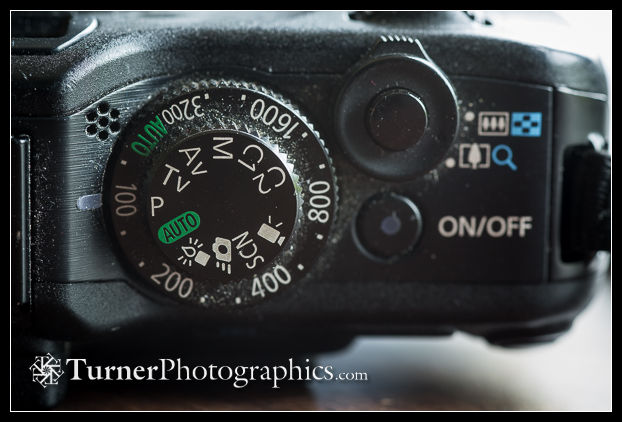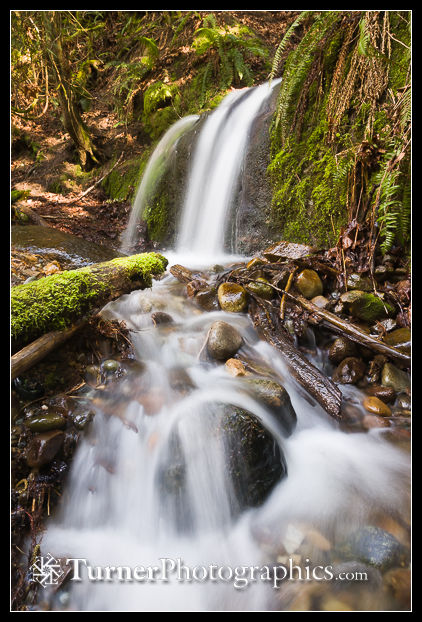Digital Photo Tip: Choose an Exposure Mode

Exposure mode and ISO dials on the Canon G12 compact camera
Most digital cameras, except for the very simplest, offer several exposure modes . How do you choose which one to use? It depends on what’s most important in the photo you’re making. This month I’ll explain the difference between the primary modes: Program Automatic, Aperture priority, Shutter priority, and Manual. Your camera may also have a variety of Scene modes.
All digital cameras have a built-in light meter which does a very good job of getting a decent exposure most of the time. The exposure mode you choose affects how the camera will set the shutter speed and the aperture, based on how much light the meter senses.
In Program Automatic (usually indicated by the letter P on the controls), the camera sets both the shutter speed and the aperture. There’s a lower limit to the shutter speed so you are less likely to get blurry images from not holding the camera steady. In Program Automatic you don’t have any control over either shutter speed or aperture. It’s a lot like the Full Auto mode.
On a compact or pocket camera, Program Automatic can be an OK choice since the range of apertures is limited and the difference in depth of field is minimal. But if you’re using a single-lens reflex or mirrorless camera with interchangeable lenses then you’ll want to choose one of the next two modes.
Aperture Priority Automatic (Av or A on the controls) is the exposure mode I use the most in my photography. I prefer to choose my aperture, or f/stop, and let my camera pick the shutter speed. By choosing the aperture I control the depth of field in my photos. If I want a sharp subject and soft-focus background I can choose a large aperture like f/2.8 or f/4. When I want almost everything to be sharp from near the camera to the far distance I’ll choose a small aperture like f/11 or f/16.
![1300453 Redvein Enkianthus blossoms [Enkianthus campanulatus]. Bellevue Botanical Garden, Bellevue, WA. © Mark Turner Redvein Enkianthus blossoms](/wp-content/uploads/2014/05/Turner_1300453.jpg)
Aperture is most important in this photo, to separate the blossoms from the background
When shooting in Aperture Priority mode you still need to pay attention to the shutter speed your camera chooses to make sure you can hold your camera steady.
Shutter Priority Automatic (Tv or S on the controls) is the mode sports and other action photographers use most. You choose a shutter speed, usually to freeze motion, and let the camera pick an f/stop. You might pick 1/1000 second to freeze the action in a football game or soccer match, or to stop the beating of a bird’s wings. You need an even faster speed to freeze a hummingbird’s wings.

You might also use Shutter Priority to select a slow shutter speed to blur motion, like waves on the beach or falling water. I’ve found that ¼ or ½ second work well for waterfalls or flowing water in a creek. Even longer exposures, into the range of several seconds, can produce very pleasing results for surf. You’ll definitely want to mount your camera on a tripod for these long exposures.
You may have wondered where the Tv label came from for shutter speed. It stands for time value, not television.
Manual exposure (M on the controls) is for those times when you want complete control over both shutter speed and aperture. Your camera’s meter will have a display that will tell you when you’ve selected a combination of shutter speed and f/stop that will be properly exposed. Because the auto modes are so good, I only use manual exposure in a couple of situations.
Manual exposure is important when you’re shooting a series of frames to be merged into a panorama. The stitching program you use won’t be able to create a seamless image if the individual photos are not exposed the same. You should also use manual focus for each frame in a stitched panorama.
The other time I use manual exposure is when I’m working with flash in controlled situations, especially in the studio. I’ll also use manual exposure when balancing natural light and flash for outdoor portraits. That’s an advanced technique that requires using a separate hand-held flash meter.
When I began my career as a photographer all cameras were completely manual. Now that auto exposure has gotten so good and reliable I use it most of the time. I choose aperture priority any time controlling depth of field is more important. I choose shutter priority when freezing motion is more important. Learn to use these two modes on your camera and you’ll be in control.

